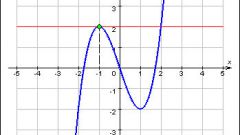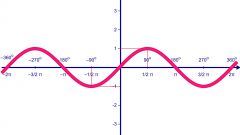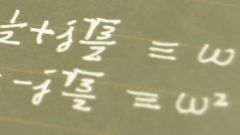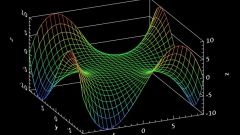Instruction
1
Break point on the graph of the function occurs when it is disturbed the continuity of the function. In order for the function were continuous, it is necessary and sufficient that its left-hand and right-hand limits at this point were equal to each other and coincide with the value of the function itself.
2
There are two types of break points – the first and second kind. In turn, the break point of the first kind are recoverable and non-recoverable. Disposable gap appears when one-sided limits are equal, but not equal to the function value at this point.
3
Conversely, it is fatal when the limits are not equal. In this case, the point of discontinuity of the first kind is called a leap. The gap of the second kind is characterized by infinite or not existing value for at least one of one-sided limits.
4
To explore the function, break points and determine their race, divide the task into several stages: find the domain of the function, determine the limits of functions, left and right, will compare their values with the value function, determine the type and kind of gap.
5
Example.
Find the break points of the function f(x) = (x2 - 25)/(x - 5) and define their type.
Find the break points of the function f(x) = (x2 - 25)/(x - 5) and define their type.
6
Solution.
1. Find the domain of the function. It is obvious that many of its values infinitely with the exception of the point x_0 = 5, i.e. x ∈ (-∞; 5) ∪ (5; +∞). Consequently, a discontinuity can be expected to be only it;
2. Calculate one-sided limits. The original function can be simplified to the form f(x) -> g(x) = (x + 5). It is easy to see that this function is continuous at any value x, so its one-sided limits are equal: lim (x + 5) = 5 + 5 = 10.
1. Find the domain of the function. It is obvious that many of its values infinitely with the exception of the point x_0 = 5, i.e. x ∈ (-∞; 5) ∪ (5; +∞). Consequently, a discontinuity can be expected to be only it;
2. Calculate one-sided limits. The original function can be simplified to the form f(x) -> g(x) = (x + 5). It is easy to see that this function is continuous at any value x, so its one-sided limits are equal: lim (x + 5) = 5 + 5 = 10.
7
3. Determine that the values of the unilateral limits of the function at the point x_0 = 5:
f(x) = (x2 - 25)/(x - 5). A function cannot be defined at this point, because then the denominator will go to zero. Consequently, at the point x_0 = 5 the function has a disposable gap of the first kind.
f(x) = (x2 - 25)/(x - 5). A function cannot be defined at this point, because then the denominator will go to zero. Consequently, at the point x_0 = 5 the function has a disposable gap of the first kind.
8
The gap of the second kind is called infinite. For example, find the break point of the function f(x) = 1/x and determine their type.
Solution.
1. The domain of the function: x ∈ (-∞; 0) ∪ (0; +∞);
2. It is obvious that the left-hand limit of the function tends to - ∞ and the right – handed to +∞. Hence, the point x_0 = 0 is a discontinuity of the second kind.
Solution.
1. The domain of the function: x ∈ (-∞; 0) ∪ (0; +∞);
2. It is obvious that the left-hand limit of the function tends to - ∞ and the right – handed to +∞. Hence, the point x_0 = 0 is a discontinuity of the second kind.




